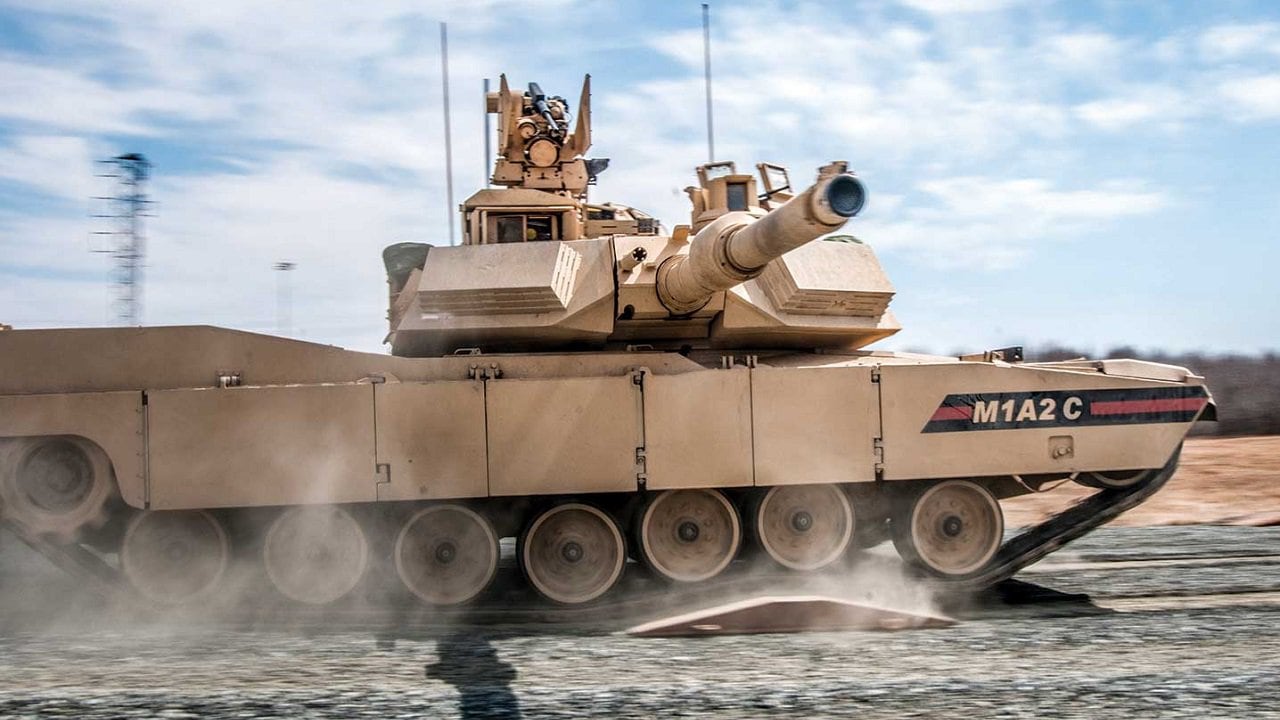M1 Abrams SEPV4 Could Be a Gamechanger: Russia’s ongoing invasion of Ukraine has highlighted the role main battle tanks (MBT) can play in modern conflicts. By the fall, an incoming delivery of Western armored vehicles is expected to hit Ukraine. Included in this delivery are Challengers, Leopards and Abrams MBTs. The American-made M1 Abrams series of tanks has remained the Army’s premiere armored vehicle for over four decades.
This widely touted, formidable MBT has undergone several facelifts over its lifetime. Its latest iteration, the M1A2 SEPv4 variant, will emerge as the most lethal tank in the Abrams family to date. While this model is arguably considered to be the best of its kind, the U.S. Army has not guaranteed a next-generation Abrams variant.
In March, the Army acquisition head revealed that the service was weighing long-term plans for a new Abrams variant, which is reflected by the fiscal 2024 budget. As described by Breaking Defense, the tank’s primary manufacturer General Dynamics Land System is balancing the delivery of the SEPv3 variant and completing the SEPv4 variant while “keeping an eye on the future.”
An Overview of the Abrams Tank Family
In the 1960s, the U.S. Army and its German counterpart worked on a joint effort to create a replacement tank for the aging M60 Patton and Leopard 1. As the Cold War was heating up, the Western countries desired an armored vehicle that could go up against the USSR’s tanks including the T-62. While a collaborative prototype was developed, an extremely hefty price tag contributed to the program’s demise.
Ultimately, the U.S. Army began its own venture to develop the MBT-70. Designed by Chrysler Defense (currently General Dynamics Land Systems), the new tank officially entered service in 1980 and featured license-built versions for the 105mm Royal Ordnance L7 gun. The next 6,000 Abrams tanks produced sported enhanced armor and a chemical, biological, radiological and nuclear defense (CBRN) protection system.
The Abrams is Combat Tested
The primary reason the Army has stuck with the Abrams MBT throughout the years is because the tank has an honorable combat record. The M1A1 first was deployed during the 1991 Gulf War, where it performed well against the USSR’s T-62 and T-55 tanks. In fact, only 23 Abrams out of the 1,849 deployed were damaged and none were completely destroyed by enemy fire. One decade later, the Abrams MBT did not perform as well in Iraq following the U.S. invasion, however, several key improvements were incorporated into latter tank variants.
Over the years, three variants with additional sub-variants emerged. The latest SEPv4 Abrams is derived from its predecessors and specifically builds upon the previous SEPv3 version. The most advanced Abrams variant in service today was equipped with critical upgrades.
The SEPv3 Abrams possessed additional electrical power, stronger armor and a more secure ammo data link to interface with advanced projectiles. This extremely formidable MBT only entered service in 2020. However, the development of its successor is far underway.
The M1 Abrams SEPv4 Will Be Unstoppable
According to a report released by the Pentagon’s Office of the Director, Operational Test and Evaluation in 2021, the latest Abrams variant hosts a range of improvements. In addition to an upgraded Gunner’s Primary Sight (GPS) with third-generation infrared sensors, the SEPv4 features the incorporation of a digital data link that can connect with the service’s XM1147 Advanced Multi-Purpose round for the MBT’s 120mm main gun. The latest iteration will also possess new laser rangefinder technology, sensory equipment and more efficient structure.
The Drive also referenced the Army’s Fiscal Year 2023 (FY23) budget request, which stated that the SEPv4, and other follow-on variants of the Abrams, could feature “other potential improvements [to] include vehicle smoke generation, survivability enhancements, signature management improvements, embedded training enhancements, 360 Situational Awareness cameras, and weight reduction efforts.”
Maya Carlin, a Senior Editor for 19FortyFive, is an analyst with the Center for Security Policy and a former Anna Sobol Levy Fellow at IDC Herzliya in Israel. She has by-lines in many publications, including The National Interest, Jerusalem Post, and Times of Israel. You can follow her on Twitter: @MayaCarlin.

